Dried Meat: Pemmican Recipes
Breville Smart Oven with
Dehydrating
Wirecutter and CR's Top Pick
4 trays for dehydrating. 86°-176°F

Best Selling Dehydrator:Nesco 5 to 12 Tray Dehydrator
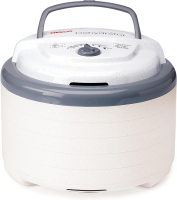
For the Serious User:Excalibur 9 Tray Dehydrator
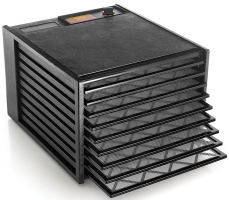
Best Selling
Meat Grinder
Grind jerky for pemmican
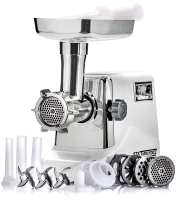
Modern Recipes
My Pemmican Notes
Meat: Beef or bison. Grass-fed only. Round is a good cut.
Prepping: Remove all visible fat. To slice, use longest knife on partially frozen meat.
Drying: Better taste if not cooked. Use low temperature, e.g. 100F, and dry for several days. Having no moisture at all is required for long storage life.
Grinding: I've tried these ways:
- Meat Grinder. The best.
- Blender. Good. Best to break into small pieces.
- Food processor. Poor.
Suet: See my:
Rendering Suet Step-by-Step
Mixing: This is by weight. I use 55% meat, 45% suet. Kent Multer recommends 60% meat, 40% suet.
Put in muffin tins.
See my pictures:
Making Jerky and then Pemmican
Rendering Suet and Making Pemmican
From: Don Wiss
To Print or Pin the Recipe, or to Post and/or Read
Comments
Pemmican Recipe Manifesto
From: (Kent Multer) kent@dallas.net
This is the text of the first draft that I sent a few weeks ago, with updates marked. Note that there are also a few new questions that came up. Feel free to email me any additional answers or other thoughts.
INGREDIENTS
-----------
* Raw red meat. Eye round roast is widely recommended.
UPDATE: Also rump steak and London broil.
* Suet: this is a particular type of beef fat. Other types will not work correctly, so be sure you get the right stuff.
UPDATE: At least one reader has used other types of fat successfully, although he says the shelf life may not be as long. One person suggested that lamb fat would work, but hadn't actually tried it.
QUESTIONS:
1. Is "tallow" the same as suet, or is this a more generic term for animal fat?
2. Also, what about lard? Ray's recipe in the archive uses the words "lard" and "tallow" as if they are equivalent; but in another message, he said that lard is pork fat and will not work correctly.
* Flavorings (optional). Salt, pepper, garlic, and dried fruit or nuts are sometimes used. One person recommended sage. If using salt, go easy on it.
UPDATE: Traditionally the dried fruit was cranberries. But commerical ones are now high in sugar. People have recommended dried cherries.
LATE UPDATE: According to the instructions that came with my dryer, you should use at least 1 tsp. of salt per pound of meat in order to prevent bacteria growth.
You will need about 60% meat, 40% suet -- these measurements are by weight, after preparation. If you have extra of either, you can save it for the next batch.
NEW QUESTION: someone asked how you would save the extra. The meat, I presume, can be stored at room temp. like jerky. Is the suet equally stable?
PREPARING THE MEAT
------------------
Slice and dry as you would for jerky; it must be dry enough to break rather than bend. Break it up by hand or with a food processor. Some people like it powdered, some prefer a more granular texture. Add the spices or other flavorings, if any.
NEW QUESTION: Other than with a food processor or blender, how do you grind the meat? with some kind of knife, mallet, mortar and pestle, etc.?
PREPARING ("rendering") THE SUET
--------------------------------
This is the part of the process about which there is the most confusion. Apparently the idea is to remove the skins or rinds, as well as any water.
UPDATE: re removing water: one person recommends actually adding some water at first, to prevent burning. During cooking, the water settles to the bottom and boils away. You can see the little blobs of water at the bottom of the pan; it's done when they're gone.
Cut the suet into small chunks, and heat it in a pan over LOW heat -- don't let it get hot enough to smoke, as it may give the pemmican a bad taste.
UPDATE: -- and have other unpleasant side effects such as adding impurities to the food, annoying your spouse, etc.
The best explanation I found for this process was from Bob Baldwin on Oct. 30. He wrote:
>This process take a while
>and you will end up with melted fat and brown globs of stuff (it's
>not a gross as it sounds). Pour the whole works through a sieve into another
>pan (I got a large sieve at Target - it doesn't need to be giant) and
>discard the globs -- I use a coffee can. I then pu a couple of layers
>of cheese cloth in the sieve and filter the fat again. Now you have the
>fat.
QUESTIONS:
1. What about removing moisture? Does it settle to the bottom of the pan, so that it's easy to separate? Or does it just boil or evaporate away?
2. Ray's book says to "render" the suet twice -- "render" apparently means the whole process of heat, filter, and cool. Is twice really necessary? (Bob doesn't think so, and the recipe in the archive doesn't call for it.)
UPDATE: another person says one rendering is enough.
FINAL PREPARATION
-----------------
Let the suet cool until it is cool enough to touch but still liquid. Pour it onto the meat slowly and mix it in until all the meat is "just saturated" (Ray) or "about the consistency of fudge" (Bob). Fill muffin tins with it, or roll it out into a sheet and cut into cookie-size chunks. When cool, it should be firm, although still a bit greasy to the touch; so wrap it in foil, plastic, or something else that the fat won't soak through. Properly made, it should keep for years at room temperature.
To Print or Pin the Recipe, or to Post and/or Read
Comments

Chicken Pemmican
Dry chicken in dehydrator, process in food processor; add melted coconut butter/oil and put in paper muffin cups. I freeze these so I won't eat them all at once.
From: Susan Carmack
To Print or Pin the Recipe, or to Post and/or Read
Comments
Coconut Oil Pemmican
Susan Carmack wrote:
>I think I ate too much pemmican with coconut oil last night!
>But it tastes so good!
Yes it does. It is the most delicious dish I have ever had.
I mix in some thyme or dried lingonberries. Yum.
I can't resist it, so I eat too much.
From: Hans Kylberg on PaleoFood list. Posted 14 Feb 1999.
To Print or Pin the Recipe, or to Post and/or Read
Comments
Pemmican Recipe
2 cups buffalo jerky or beef jerky, shredded
1 cup dried chokeberries or tart red cherries, chopped
6 TBSP tallow (beef fat)
Combine all ingredients and form into 6 patties. Refrigerate until serving.
From: dgkmom@pinn.net (Diane Karnbach)
To Print or Pin the Recipe, or to Post and/or Read
Comments

Pemmican Recipe, According to Ray
I make pemmican by grinding up several lbs of dehydrated eye of round slices with a handfull of dried cherries in a food processor or blender (or between rocks if you're a purist). The meat should dried until brittle to facilitate grinding and eliminate any moisture which could facilitate bacteria or mold. To this I add tallow until the dried meat is totally saturated. It's then done. Total time (apart from dehydrating meat) 15 minutes.
I save tallow from broiling (cheap) hamburger during the previous week. I leave the broiling pan in the oven after the burgers are done for about 10 minutes at 350 then leave it in the warm oven until I do the dishes. I then srain out the tallow into a bowl. As it now contains no water, it dries hard and white (it can be substituded for wax in making candles). If kept dry, pemmican will keep longer than you will live. Beware of condensation in airtight containers. I keep mine in a cassarole dish with a loose fitting glass lid on top of (not in) the refrigerator.
From: Ray Audette, author of
NeanderThin: A Caveman's Guide to Nutrition
To Print or Pin the Recipe, or to Post and/or Read
Comments
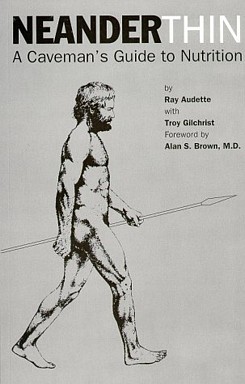
Saskatoon Pemmican Recipe
1 c Jerky; beef or venison
1 c Dried Saskatoon berries or dried blueberries
1 c Unroasted sunflower seeds or crushed nuts of any kind
2 ts Honey
1/4 c Peanut butter
1/2 ts Cayenne [optional]
This version uses peanut butter rather than melted suet or lard as the binding agent, which is more palatable for today's health conscious diets.
Grind [or pound -JW] the dried meat to a mealy powder. Add the dried berries and seeds or nuts. Heat the honey, peanut butter and cayenne until softened. Blend. When cooled, store in a plastic bag or sausage casing in a cool dry place. It will keep for months.
From:
Edible Wild Fruits and Nuts of Canada, published by the National Museums of Canada
Posted by: Jim Weller
To Print or Pin the Recipe, or to Post and/or Read
Comments
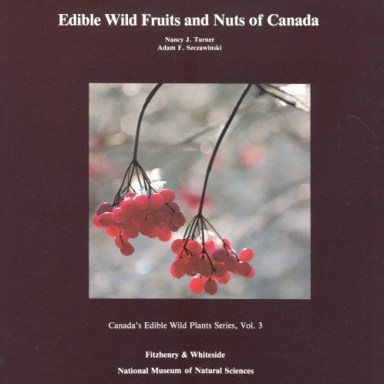
Pemmican Recipe by the Dooleys of Boise
4 c Dried meat
3 c Dried fruit
2 c Rendered fat
Nuts
Honey
4 cups dried meat - depending on how lean it is, it can take 1 - 2 lbs. per cup. Use only deer, moose, caribou, or beef (not pork or bear). Get it as lean as possible and double ground from your butcher if you don't have a meat grinder. Spread it out very thinly in cookie sheets and dry at 1800 overnight or until crispy and sinewy. Regrind or somehow break it into almost a powder.
3 cups dried fruit - to taste mix currents, dates, apricots, dried apples. Grind some and leave some lumpy for texture.
2 cups rendered fat - use only beef fat. Cut into chunks and heat over the stove over medium (or Tallow) heat. Tallow is the liquid and can be poured off and strained.
Unsalted nuts to taste and a shot of honey.
Combine in a bowl and hand mix. Double bag into four portions. The mixture will last for quite a while without refrigeration. I have eaten it four years old. It actually improves with age.
HINT: Vary the fat content to the temperature in which it will be consumed. Less for summer. Lots for winter. Not only is it good energy food for canoeing, but an excellent snack for cross country skiing. This recipe was originally from a Chippewayan Indian Guide as he learned it from his father. No buffalo chips!
This recipe was submitted by the Dooleys of Boise. Our thanks to them.
Winter 1981 (Vol. 4, No. 1) Newsletter for Voyageurs www.classe.cornell.edu/~seb/pemmican.html [dead link]
From: EdibleWild@onelist.com
To Print or Pin the Recipe, or to Post and/or Read
Comments

Old Time Recipes
Hudson Bay Company Pemmican
"There is little object in travelling tough just for the sake of being tough."- The Governor and Company of Adventurers of England Trading into Hudson's Bay, an early employee manual.
Pemmican: pound a quantity of jerky until shredded. Cut fresh fat into walnut sized hunks and try out over a slow fire or in an oven. Pour the hot fat over the shredded jerky and mix into a sausage meat like consistency [a 50/50 mix]. Pack mixture into waterproof bags. Add dry berries if desired; do not salt. It takes 5 lb of meat to make 1 lb jerky so pemmican isn't overly fatty, just concentrated.
From
Wilderness Cookery by Bradford Angier of Hudson Hope, B.C., published by Stackpole Books, 1961
Also:
Preserving game meat, not jerky: Cut meat into large strips, make a rub of 3 pounds salt, 4 tb allspice and 5 tb pepper. Drape over wire and air dry one month. Slice thin and eat raw or use in stews.
From
Wilderness Cookery by Bradford Angier of Hudson Hope, B.C., published by Stackpole Books, 1961
Pemmican: try adding dried apricots, ground walnuts, allspice or orange peel to the mix. Small seasoned pemmican balls make interesting appetizers.
From
The Complete Hunter: Venison Cookery, Cowles Creative Publishing
Posted to rec.food.preserving by Jim Weller on 31 Jan 99
To Print or Pin the Recipe, or to Post and/or Read
Comments

Pemmican Recipes posted to rec.food.preserving by Jim Weller in Yellowknife
Lots of pemmican recipes start by grinding or shredding jerky but the authentic way, at least in northwestern Canada is to dry the jerky until it is brittle, then pound it with a rounded stone on a flat stone "anvil" until the meat separate into fluffy fibres. Some "pound meat" is almost a powdery dust. Then you add the melted fat and the optional berries.
To Print or Pin the Recipe, or to Post and/or Read
Comments

Pemmican By Dorthea Calverley
Venison or buffalo
Saskatoon berries or Chokecherries
Melted fat
During the summer the Indians dried Saskatoon berries as well as meat. When the chokecherries were ripe the band assembled at some convenient spot to make pemmican.
To the chant of traditional songs, the women beat strips of dry-meat (a hollow log, up-ended, and bound with a thong of rawhide to prevent splitting served as a container) with stone pounding implements until it was almost like powder. The mass was mixed with melted fat in a bark trough, then packed very tightly into skin bags, and sewed up so that no air could enter, folding the skin over until no air remained in the bag. Saskatoons and chokecherries pounded up, pits and all added to the flavour, if not the digestibility. Some women, as in any society were very clean and careful when preparing food, and some were not. A well-known good pemmican-maker commanded a higher price as a bride.
"Sweet" pemmican was made by cracking the big animal bones and boiling them with water. The melted fat came to the top, and when congealed, was used for mixing.
Also the paunch or stomach of the animal was used as a container. People who are horrified by this idea should remember that until a very few years ago sausage casings were made from the cleaned intestines of pigs or lambs.
If kept dry, pemmican would remain good for years. Even today, many native people embarking on long trips into remote areas make a supply, for it is one of the most concentrated foods known to man. It will sustain life indefinitely and needs no refrigeration.
The Indians used pemmican for emergency rations due to the large amount of work involved in making it. They killed fresh meat whenever they could. The Pouce Coupe Prairie was famous for good quality pemmican, but the whole Peace River country "exported" it for centuries before the white man arrived. It was partly to raid the country for Peace River Pemmican that the Cree made their periodic raids from the Edmonton area.
After the fur-trade began, pemmican was sought after as well as furs. The fur brigades needed great amounts to carry them on long journeys to Lake Superior, during which time the voyageurs had no time to stop and hunt. In fact it was to help the Indians to shoot more buffalo for pemmican that the white men gave them guns. With their new weapons and with the added incentive of obtaining trade goods for the product, the Indians forgot their ages-long tradition of conservation. Where they used to take no more than they needed, they now slaughtered mercilessly and wantonly. By 1830, the herds of bison no longer wintered on Pouce Coupe's Prairie, but clung in one's and two's to the coulees and isolated valleys. In 1906 the last, a tame one, was shot near Fort St. John.
Archeological "digs" have not taken place in the area, except for fossils. Pioneers yet living know where "Indian Hill" is, a few miles west of Dawson Creek. Hector Tremblay Jr. in an interview here in August, 1973, remembered the great summer pemmican making gatherings there not fifty years ago. There was an Indian cemetery there too, now ploughed over.
The white pioneer women knew the preserving quality of fat. It was customary to grind up quantities of beef or moose, fry or bake it in patties, and pack it in crocks. Over it enough rendered lard was poured to cover it well. Crocks of preserved meat were lifesavers when gangs of men had to be fed at threshing, wood sawing, or "building bee" time.
Sometimes black, rounded masses are ploughed up when breaking fields. Many people believe them to be pemmican, or even "fossilized pemmican". There is not a chance in a thousand that is anything more than a kind of giant, underground fungus known as "tuckahoe". Museums must have dozens turned in, for some people cannot be persuaded that they have not made a notable find. The comparatively lightweight and "mushroom" smell when they are dug up convinced the informed person at once as to their nature. They are fairly common.
By Dorthea Calverley
http://www.calverley.dawson-creek.bc.ca/Part01-FirstNations/ [now dead]
Posted to rec.food.preserving by Jim Weller (in Yellowknife)
To Print or Pin the Recipe, or to Post and/or Read
Comments

Pemmican and How To Make It Part 1
When the white men set out across North America, a reliable supply of portable provisions was one of the major problems. Lacking the skills of the native hunters, it was doubtful that they could live off the country. They knew something about preserving food, a necessity for sailing ships, but it was limited to salting and pickling. The resultant salt pork and hardtack were unappetizing fare but they kept life in a man.
The Plains Indians had a better solution to the problem, and one on which the fur traders and explorers came to depend. The answer was pemmican. The Cree word Pimikan meant, roughly, manufactured grease, but there was a lot more than that to it.
Basically it was buffalo meat, cut with the grain in thin slices or strips and dried in the sun or over a slow fire. A smoking fire added flavor and was useful for keeping the flies off though if meat racks were high they tended to be clear of flies. The dry-meat was then spread on a hide and pounded by stones or mallets to become "beat meat" which was tossed into a rectangular rawhide container (hair on the outside) about the size of a flour sack. To the dehydrated, crumbled meat was added one-third or more of melted fat and the bag was sewn up. The fat might be mixed with the meat before or after it was bagged. While the pemmican was cooling the bag was turned from time to time to prevent the fat all settling on one side. Compressed in a skin bag that was greased along the seams to eliminate air and moisture, it would keep for years.
In the best pemmican, which was limited in quantity, the meat was very finely pulverized and only marrowfat, from boiled broken bones, was used. For variety and flavour dried fruits such as chokecherries, Saskatoon or Service berries might be added. The pemmican bags were flattened for easier handling. At times, rendered fat was stored in rawhide bags, left in a round shape to distinguish them from the pemmican bags. Marrow, while better tasting, was comparatively scarce and did not keep as well as ordinary tallow and would be preserved in bladders. The bags of pemmican weighed 80 to 90 pounds and it was estimated that each bag accounted for two buffalo (bison). So high was the food value that three-quarters of a pound was a reasonable day's ration but hard working voyageurs were more likely to consume between one and two pounds each in a day.
Moose and elk meat was sometimes treated similarly but the results were not so satisfactory. In some regions fish pemmican was made by pounding dried fish, mixed often with sturgeon oil, but it was more usual, as it is now among the Crees, for the pounded fish and the fish oil to be kept separately, the oil in animal bladders.
David Thompson in 1810, described pemmican in detail: "...dried provisions made of the meat and fat of the bison under the name of pemmican, a wholesome, well tasted nutritious food, upon which all persons engaged in the fur trade mostly depend for their subsistence during the open season; it is made of the lean and fleshy parts of the bison dried, smoked and pounded fine: in this state it is called beat meat: the fat of the bison is of two qualities, called hard and soft;...the latter...when carefully melted resembles butter in softness and sweetness. Pemmican is made up in bags of ninety pounds weight, made of the parchment hide of the bison with the hair on; the proportion of the Pemmican when best made for keeping is twenty pounds of soft and the same of hard fat, slowly melted together, and at a low warmth poured on fifty pounds of beat meat, well mixed together, and closely packed in a bag of about thirty inches in length, by near twenty inches in breadth, and about four in thickness which makes them flat, the best shape for stowage and carriage...I have dwelt on the above, as it (is) the staple food of all persons, and affords the most nourishment in the least space and weight, even the gluttonous French Canadian (the voyageurs) that devours eight pounds of fresh meat every day is contented with one and a half pounds per day: it would be admirable provision for the Army and Navy."
By Dorthea Calverley
http://www.calverley.dawson-creek.bc.ca/Part01-FirstNations/ [now dead]
Posted to rec.food.preserving by Jim Weller (in Yellowknife)
To Print or Pin the Recipe, or to Post and/or Read
Comments

Pemmican and How To Make It Part 2
James Isham, writing fifty years earlier, comments on the quality of the marrow-fat, it being "...fine and as sweet as any butter or fat that is made, moose and buffalo fat they reserve after the same manner in great quantities." He mentions that the meat, cut in slices, is dried on poles over a fire, which takes about four days, and then pounded or beaten between two stones till some of it is as small as dust. "Pemmican" he claimed, was "reckon'd by some very good food by the English as well as natives."
There were three ways of eating pemmican. There was the soup or stew called rubbaboo in which a lump of pemmican was chopped off and put in a pot of boiling water. If it was available, flour was added and possibly wild onions, sometimes a little sugar, occasionally a vegetable and a scrap of salt pork. Frying the pemmican in its own fat resulted in what was called rousseau (or rechaud or richot) and to it also might be added some flour or a suitable wild plant for flavour. The third method was to hack off a lump and eat it raw, a slow process, since it dried extremely hard, but a satisfying concentrated food for the travelers with no time to stop.
Though they realized its worth, not everyone enjoyed pemmican, no matter how prepared. A party from Boston traveling to the Saskatchewan to see the solar eclipse in 1860 commented that "rousseau is by comparison with the other palatable, though it is even then impossible to so disguise it as to avoid the suggestion of tallow candles; and this and the leathery, or India-rubbery, structure of the meat are its chief disqualifications. But even rousseau may lose its charms when taken as a steady diet three times a day for weeks."
While it is known that pemmican lasts for a long period it is doubtful if there is any lying about now. At times a strange lump of organic matter is dug up and is claimed to be "fossil pemmican." This is a trap for the unwary for in a all likelihood this "relic" will turn out to be a fungus known as tackahoe (Polyporus tuberaster) which is found in the prairie black soils in conjunction with aspen.
The first step in making pemmican is to procure a moose, or other large animal. The raw meat is sliced, as thinly as possible, in sheets or strips. A rack is built to hang the sheets and strips of meat on and this rack is enclosed in a canvas shelter, or a lumber smokehouse is built. A slow fire of dry poplar, willow, or other hardwood is made under the meat and kept going till the meat is completely dried and smoked. This takes two or more days.
The dried meat is then partially enclosed in a moose hide or a strong canvas bag and pounded with a heavy instrument such as an axe or a wooden mallet made for the purpose till the meat is in very small pieces or, for the best pemmican, completely powdered. In these days after pounding, the meat might be put through a grinder.
The best parts of the animal fat are taken and rendered. The bones of the animal are broken up and boiled for their marrow content. The rendered fat is heated to boiling point and put in a container. Then as much of the pounded meat as can be absorbed is added to the hot fat.
This is now pemmican and it is put in animal hide bags, or, more probably today, in moulds such as small dishes to set. Such is the food on which the western travelers of former years depended.
By Dorthea Calverley
http://www.calverley.dawson-creek.bc.ca/Part01-FirstNations/ [now dead]
Posted to rec.food.preserving by Jim Weller (in Yellowknife)
To Print or Pin the Recipe, or to Post and/or Read
Comments




Paleo Kitchen Equipment Encyclopedia
